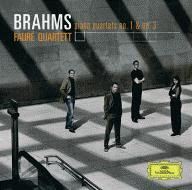YouTube Orchestra: Reaching a New Audience
Perhaps one of the biggest changes to happen to the world in the last 20 years is the advent of the internet. An entire generation has grown to adulthood with the concept of global connectivity, with the concept of instant information access, with the technology more a part of their personal lives than it is in their work place. The YouTube orchestra is just the latest expression of this sort of advancement, an orchestra that was compiled over the internet through web auditions.
Over 3000 videos were submitted by amateur and professional musicians from around the world. Over 15 million votes selected the 93 winners from 33 different countries who would eventually comprise the orchestra - ranging from 15 to 55 years of age. Last month, the prestigious British magazine Gramophone placed the group among the 10 most inspiring orchestras, praising it "for democratising classical music on a global scale, making it truly all-inclusive."
Beyond creating the orchestra in a new way, the publicity of how they created the orchestra has reached out to a new audience. The Internet generation of performers attracted a youthful crowd that had no reason to feel shy. The program was created with this generation in mind - a flurry of different piece rather like "selections" from, or "the best of," - 15 diverse works comprised of excerpts and movement, but not whole works.
How did they play:
"Quite well, actually..." Anthony Tommasini of The New York Times
The staid decorum was suspended for the three-hour concert, which featured 15 short pieces. The audience spent the evening waving their mobile phones and cameras in the air, recording the event and sending clips to friends. Computer graphics danced in time to the music across the ceiling of the 19th century Carnegie Hall, while video diaries of the orchestra were projected onto a huge screen like something out of The X Factor.
"For us, it's been somewhere between a kind of classical music/summit conference/scout jamboree with an element of speed dating thrown in" - Michael Tilson Thomas
The concert started with the third movement of Brahm's Fourth Symphony. After the Brahms, Edwin Outwater led music from Lou Harrison’s Canticle No. 3 for percussion, Dvorak’s Serenade for Winds and then Gabrieli canzon - brass players facing off from opposite sides of the first balcony. The strings played Villa-Lobos’s “Bachianas Brasileiras” No. 9. The orchestra finished off the first half with a rousing account of Wagner’s “Ride of the Valkyries.”
During the second half of the concerts, numerous standing ovations started with Internet Symphony 1, Eroica by Academy Award-winning composer Tan Dun, which received its world premiere. After the finale from Symphony No 4 by Tchaikovsky, the atmosphere climaxed as the audience jumped to their feet, begging for more. Some even wept.
This was a concert and a show, a performance in ever aspect of the word. It was more than just a classical performanc as Thomas sat on the podium at one point, watching pianist Yuja Wang fly through the "Flight of the Bumble Bee." Images of musical notes, geometric patterns and of the players were projected on the walls and ceiling, and the audience was encouraged to bring video cameras. The music was selected as much for it's rousing affect on the audience as for the musical quality - classics that rocked the house.
While it's great that the Google and YouTube could bring classical music to a younger audience and show that concerts can be as alive and entertaining as pop or rock concerts, it highlights a problem with the internet audience, a lack of focus. The pieces were all short segments, rather than providing a performance of a longer full work. Certainly the audiences was exposed to a large variety of music, ranging over five centuries, but it didn't get the chance to experience the beauty of a full length piece - which is one of the aspects that separates classical music from the other forms, the ability to create a musical idea that continues for more than just a few minutes.
I don't want to detract from what was accomplished, or the quality of the music performed - the YouTube Orchestra performed a wonderful concert! But we need to go the next step, introducing the joy of extended pieces to this same audience that has grown accustom to getting its information and music in bite size chuncks.

Comments